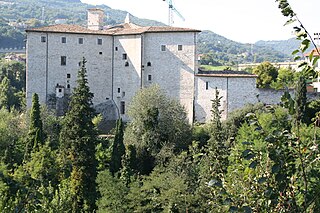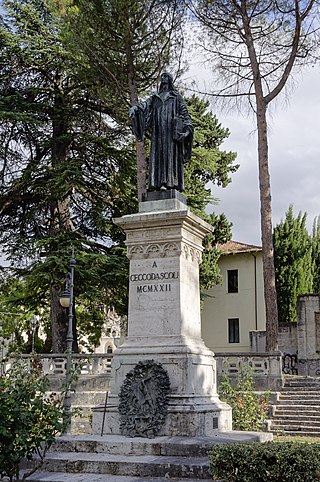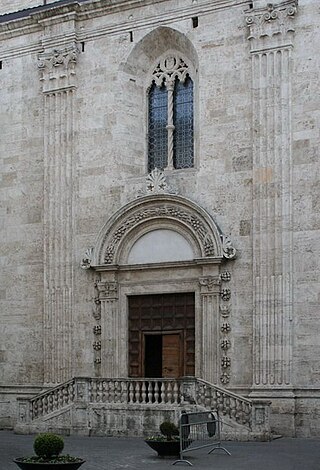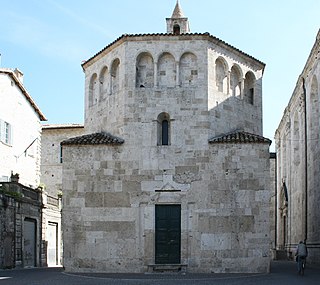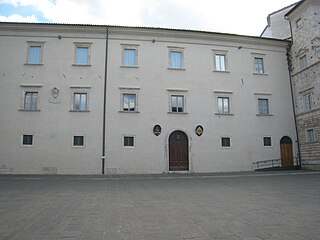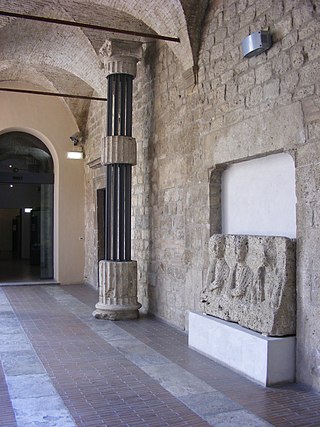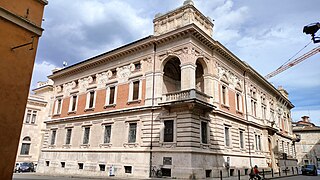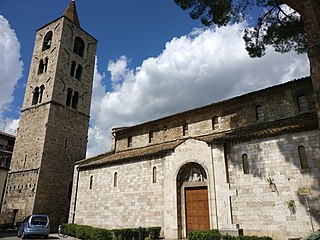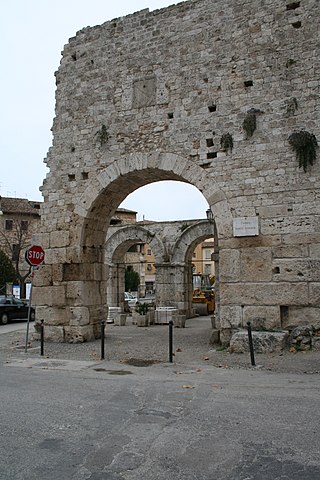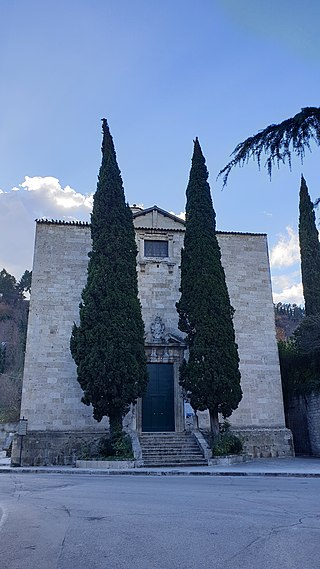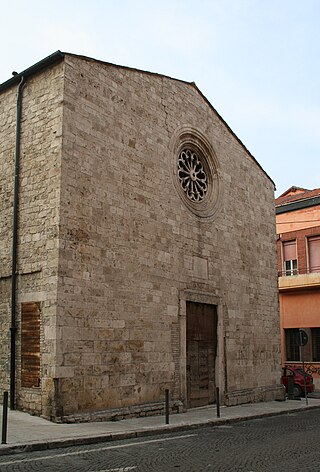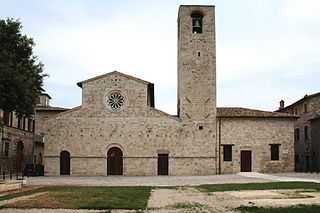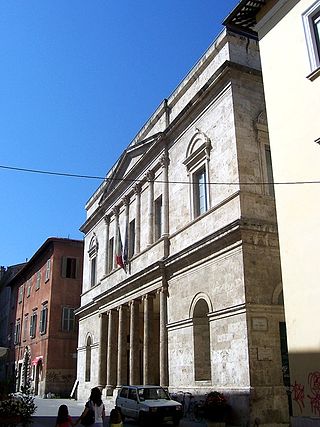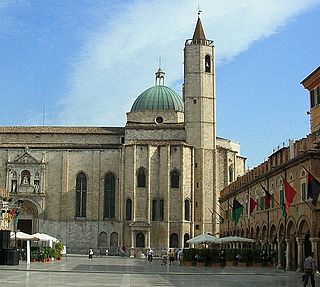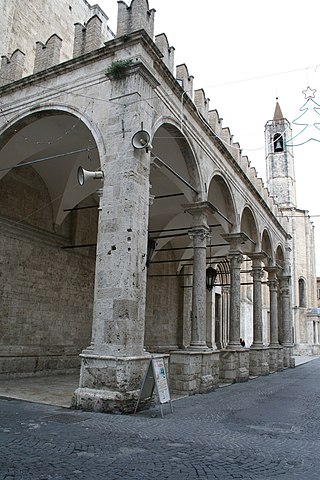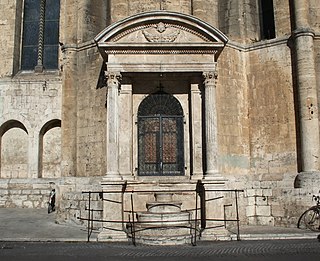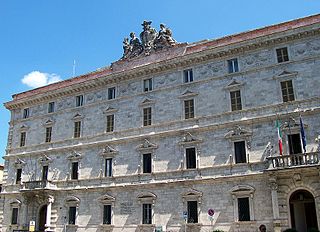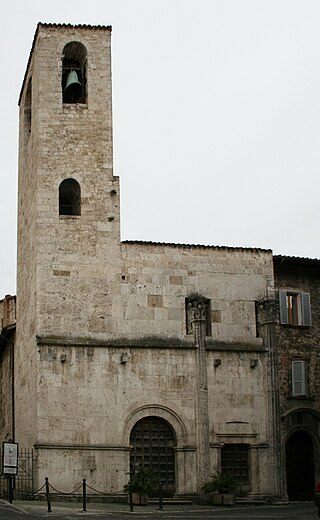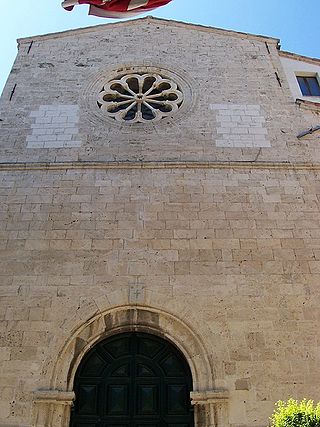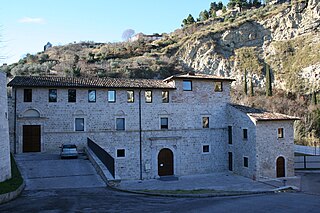Self-guided Sightseeing Tour #2 in Ascoli Piceno, Italy
Legend
Tour Facts
5.3 km
158 m
Experience Ascoli Piceno in Italy in a whole new way with our free self-guided sightseeing tour. This site not only offers you practical information and insider tips, but also a rich variety of activities and sights you shouldn't miss. Whether you love art and culture, want to explore historical sites or simply want to experience the vibrant atmosphere of a lively city - you'll find everything you need for your personal adventure here.
Activities in Ascoli PicenoIndividual Sights in Ascoli PicenoSight 1: Forte Malatesta
The Malatesta Fort is a fortified urban defense work of the city of Ascoli Piceno. Built near the banks of the Castellano stream and the Cecco bridge, an obligatory step for those accessing the city from the east, it was rebuilt on the remains of previous architecture erected over the centuries.
Sight 2: Monumento a Cecco d'Ascoli
The monument to Cecco d'Ascoli is a work dedicated to Cecco d'Ascoli born Francesco Stabili, an illustrious figure of poet, doctor, teacher, philosopher and astrologer / astronomer, located in Ascoli Piceno in Piazza Giacomo Matteotti.
Sight 3: Porta della Musa
On the left side of the Cathedral of Sant'Emidio there is the side entrance of the cathedral of Ascoli Piceno called La Porta della Musa. Poetic denomination that derives from the inscription of the couplet, in Latin, which can be read in the block of travertine walled up near the door:
Sight 4: Battistero di San Giovanni
The Ascoli Piceno Baptistery, also known as the baptistery of Saint John, is a religious building found on the eastern end of the piazza Arringo at the center of Ascoli Piceno and sitting next to and just north of the cathedral dedicated to St. Emygdius, the city's patron saint.
Sight 5: Museo Diocesano
The Diocesan Museum in the Italian town of Ascoli Piceno is located in one wing of the ecclesiastical palazzo, which also contains the city's pinacoteca and the state archeological museum.
Sight 6: Museo Archeologico Statale di Ascoli Piceno
The State Archaeological Museum of Ascoli Piceno is housed inside Palazzo Panichi in Piazza Arringo. It was born with the function of the Museum of the Territory and in particular of the southernmost strip of the Ascoli area: the Tronto valley and the Tesino valley with an expansion up to the Salino valley, in the province of Teramo, which in the nineteenth century gravitated towards Ascoli.
Wikipedia: Museo archeologico statale di Ascoli Piceno (IT), Website
Sight 7: Palazzo Bazzani
Palazzo Bazzani, also known as Palazzo della Cassa di Risparmio, is a building in the historic center of Ascoli Piceno, located in Corso Giuseppe Mazzini.
Sight 8: Porta Tufilla
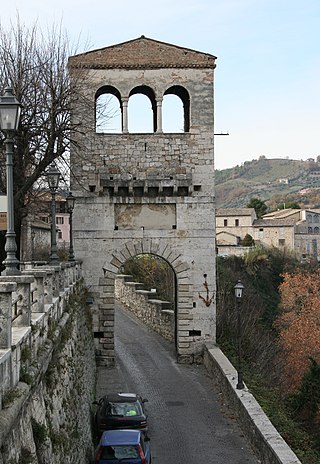
Porta Tufilla is one of the gates of the city of Ascoli Piceno.
Sight 9: Chiesa di Santa Maria Intervineas
San Maria Inter Vineas is a late-Romanesque and early-Gothic-style, Roman Catholic church located on Largo del Cremore in the town of Ascoli Piceno in the region of Marche, Italy.
Sight 10: Teatro dei Filarmonici
The Teatro dei Filarmonici, formerly of the Filodrammatici, of Ascoli Piceno is located in Via delle Torri, in the historic center of the Marche city.
Sight 11: Porta Gemina
Porta Romana, also known as Porta Gemina and Porta Binata, is one of the oldest and most important gates of the city of Ascoli Piceno.
Sight 12: Chiesa del Santissimo Crocifisso dell'Icona
The church of the Holy Crucifix of the Icon, also called the church of Santa Maria delle Grazie, is a Catholic place of worship, located in Piazza Cecco d'Ascoli in the western area of the historic center of Ascoli Piceno, between the Roman Theater and the medieval walls with Porta Romana.
Sight 13: Chiesa di San Giuliano
The church of San Giuliano is located in the historic center of the city of Ascoli Piceno, in the Marche region.
Sight 14: Museo dell'Arte Ceramica
The Museum of Ceramic Art is located in Ascoli Piceno, in the evocative cloister of the former convent of the Romanesque church of San Tommaso overlooking the square of the same name. It was inaugurated on June 1, 2007.
Sight 15: Galleria d'arte contemporanea Osvaldo Licini
The Osvaldo Licini Gallery of Contemporary Art is an art gallery in Ascoli Piceno, set up at the Sant'Agostino Cultural Center complex and dedicated to the Ascoli painter Osvaldo Licini.
Wikipedia: Galleria d'arte contemporanea Osvaldo Licini (IT)
Sight 16: Teatro Ventidio Basso
The Ventidio Basso Theater is the communal theater, concert hall, and opera house in the city of Ascoli Piceno region of Marche, Italy. It is located on via del Trivio, in front main cloister of the church of San Francesco, near piazza del Popolo. The exterior was erected in neoclassical-style, with grand interiors.
Sight 17: Chiesa di San Francesco
The Basilica di San Francesco is a Gothic-style, Roman Catholic church located on the Piazza del Popolo in the town of Ascoli Piceno in the region of Marche, Italy.
Sight 18: Loggia dei Mercanti
The Loggia dei Mercanti is a sixteenth-century work that was leaning against part of the right side of the church of San Francesco, of which it covers about a third, between Corso Mazzini and Piazza del Popolo in Ascoli Piceno. The edge of the western front is located almost exactly at the intersection of the two main road axes of the Roman city.
Sight 19: Edicola di Lazzaro Morelli
The aedicule of Lazzaro Morelli, of classicist taste, is located in Ascoli Piceno in Piazza del Popolo adhering to an apse of the external wall of the church of San Francesco. It was built in 1639 and dedicated to the Madonna of Reggio at the behest of the client, the governor pro tempore mons. Gerolamo of the Codebò counts of Modena.
Sight 20: Palazzo del Governo
The Government Palace of Ascoli Piceno, also known as Palazzo San Filippo, is considered one of the largest buildings in the city. Its architecture occupies the entire east side of Piazza Fausto Simonetti and houses the headquarters of the Prefecture and the Provincial Administration. The name of Palazzo San Filippo is attributed to this building because a portion of it was a convent built in the seventeenth century, which belonged to the congregation of the Filippini.
Sight 21: Pinacoteca Civica
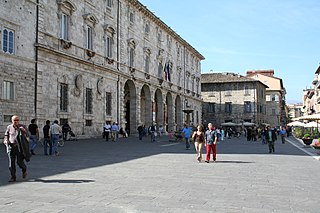
The Civic Art Gallery of Ascoli Piceno, considered one of the most important in the Marche region, and in central Italy, occupies the North (entirely) and West (partially) wings of the first and second floors of the Palazzo dell'Arengo in Piazza Arringo.
Sight 22: Chiesa di San Gregorio Magno
The church of San Gregorio Magno, in Ascoli Piceno, was born as a transformation into a place of Christian worship of a pagan Roman temple, of greater dimensions, which was built between the late Republican Age, first century BC, and the early Augustan Age, first century AD in the area, behind the Palazzo dell'Arengo, where the Piazzetta di San Gregorio opens up, connecting the city plan to the Colle dell'Annunziata.
Wikipedia: Chiesa di San Gregorio Magno (Ascoli Piceno) (IT)
Sight 23: Chiesa di Sant'Angelo Magno
The church of Sant'Angelo Magno is located in the historic center of the city of Ascoli Piceno, in the ancient district of Piazzarola.
Sight 24: Grotte dell'Annunziata
The caves of the Annunziata are one of the monumental constructions of the Roman Asculum, they are actually artificial caves, technically called "substructures", they are niches with barrel vaults, leaning on three sides against the cliff of the Colle dell'Annunziata, which surround entirely on the eastern side. A peculiarity of the structure, perhaps unique in its kind, is the shape of the termination of the arches, which is "wedge-shaped", probably to better anchor the structure to the rocky hill.
Sight 25: Musei della Cartiera Papale
The Papal Paper Mill of Ascoli Piceno is an architectural complex made of sturdy regular square ashlars of travertine. The multifunctional vocation of the building has welcomed, over time, various work activities, such as: the paper mill, the water mills, the tanning of fabrics and the ironworks, all carried out with the inseparable and precious symbiosis of the driving force of the waters of the nearby Castellano stream.
Share
How likely are you to recommend us?
Disclaimer Please be aware of your surroundings and do not enter private property. We are not liable for any damages that occur during the tours.
GPX-Download For navigation apps and GPS devices you can download the tour as a GPX file.
